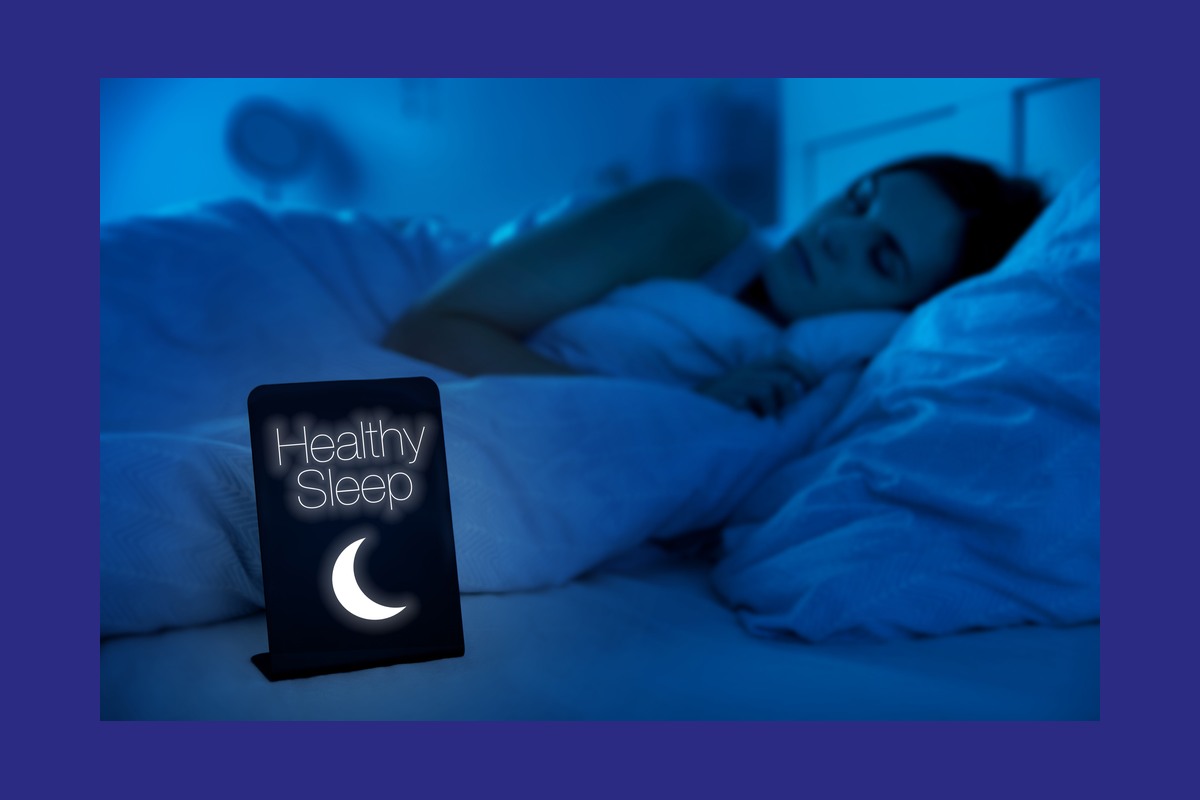People spend about a third of their lives asleep, yet many overlook the role their surroundings play in rest and recovery. Most of the attention goes to finding the perfect mattress, but research shows that sleep quality depends just as much on the overall environment. Factors such as temperature, lighting, and noise levels can make a significant difference in how well you rest each night.
Studies reveal that cluttered bedrooms raise stress hormones like cortisol, while well-organized, calming spaces promote relaxation. Even small details—like keeping the temperature around 65 degrees Fahrenheit (18.3 degrees Celsius) and minimizing light exposure—can improve how deeply you sleep.
This article explores why your environment influences your sleep more than you might think. You’ll discover practical ways to transform your bedroom into a soothing retreat, using color, light, and thoughtful organization to create your ideal sleep sanctuary.
The connection between your sleep environment and mental health
Your sleep quality and mental health are closely linked to your surroundings. Research shows your environment doesn’t just determine how well you sleep – it shapes your psychological health too.
How surroundings affect sleep quality
Your sleep environment includes many physical elements that directly shape your sleep quality. Studies show temperature affects sleep by a lot. People find it harder to sleep in warmer climates, particularly during summer months. The sweet spot for bedroom temperature sits around 65 degrees Fahrenheit.
There’s another reason to consider your location – noise pollution. This matters most when you live in urban areas or near transportation hubs. Here’s something interesting: random noises like car horns disrupt sleep more than steady background noise. Light from streetlights, electronics, and other sources can throw off your body’s natural sleep-wake cycle.
Your sleep quality also depends on:
- Bed comfort and bedroom layout
- Air quality and ventilation
- Humidity levels
- Electronic distractions (televisions, computers, phones)
Poor sleep habits, including uncomfortable sleep environments, lead to sleep issues. The numbers tell the story: 76.5% of people with poor sleep habits report problems sleeping, compared to 56.1% of those with better practices.
The basics of environmental psychology
Environmental psychology looks at how our surroundings shape our mindset and actions. Your home’s quality plays a big role in determining how well you sleep – both directly and through psychological effects.
Your social environment – neighborhood safety, trust, and community spirit – affects your sleep quality. People sleep longer and better in communities with stronger social bonds. On the flip side, areas with higher crime rates and safety concerns relate to sleep problems, including insomnia and shorter sleep.
Mental health bridges the gap between your environment and sleep quality. Research reveals mental health accounts for up to 33.88% of the connection between social factors and sleep quality. Better sleep surroundings don’t just help you rest – they boost your mental health, which then leads to better sleep in a positive cycle.
The message is simple: creating the right sleeping environment isn’t just about comfort – it’s vital for both sleep hygiene and mental health.
Color, light, and layout: The invisible influencers
Your bedroom’s subtle elements play a crucial role in how well you sleep. The colors, lighting, and layout of your sleep space work together. These elements create an environment that either helps or hurts your ability to rest well.
Color psychology and emotional response
The colors around you while you sleep significantly affect your mood and sleep quality. Studies show that soft blues, blue-greens, and blue-grays help people sleep better. These shades create trust and make you feel safe enough to relax completely.
Research suggests these colors work best for peaceful sleep:
- Light pinks (blush, rose) bring peace and calmness
- Pale greens create hope and renewal feelings
- Neutral tones (beige, taupe, ivory) add warmth and subtle luxury
Bright red should be avoided as it raises blood pressure and breathing rates. Purple, brown, black, and orange might also disturb your peace and relaxation.
Choosing the right wall art can enhance these calming effects even more. Pieces from Art by Maudsch complement serene color palettes beautifully, adding personality and visual balance without overwhelming the space. Investing in art that reflects tranquility can make your bedroom feel like a true retreat.
Lighting and circadian rhythm
Light remains the biggest external factor that affects sleep. Your body’s internal 24-hour clock, known as the circadian rhythm, responds strongly to light exposure.
Light hitting your eyes triggers special retinal cells that send signals to your brain about the time of day. Your brain then sends messages throughout your body to control various systems. Research shows that nighttime light exposure can disrupt sleep cycles and reduce rest quality.
The best sleeping conditions require a dark bedroom at bedtime. Blackout curtains help block outside light and support a healthy sleep cycle.
Room layout and spatial harmony
Your bedroom furniture’s arrangement directly affects how well you sleep. Balanced furniture placement creates harmony. Similar nightstands on both sides of your bed promote stability in your personal life, which helps improve sleep.
This setup transforms your bedroom into a peaceful retreat instead of a stress source. Your mattress should fit comfortably without crowding the room. Smart use of vertical space and underbed storage helps maximize small bedrooms and creates a more open feel that helps you relax.
Clutter, cleanliness, and comfort
Clutter does more than look bad—it acts as a physical stressor that affects your sleep quality. The way you organize and clean your sleeping space plays a vital role in how well you rest, beyond just picking the right mattress.
The stress of clutter and disorganization
Your brain sees bedroom chaos as unfinished work, which keeps you alert instead of relaxed. People who sleep in cluttered bedrooms report worse sleep quality and struggle more to fall asleep. This visual chaos overloads your mind—forcing your brain to work extra when it should slow down. Research connects bedroom clutter to higher levels of depression, anxiety, and stress through increased cortisol production. Sleep experts found that people who rest in messy spaces face a higher risk of developing hoarding disorders.
Cleanliness and its effect on sleep
A clean bedroom helps you breathe better while you sleep. Dust that builds up on surfaces and in bedding can trigger allergies and make breathing difficult. Your pillows need extra care—researchers found various types of mold, including Aspergillus fumigatus (a common allergen), in unwashed pillows. Sleep experts suggest washing pillows every three months and buying new ones every two years.
Creating zones for rest and function
Your bedroom becomes more functional and sleep-friendly when you divide it into specific areas. You can organize your space into these distinct zones:
- Sleep sanctuary (bed area without work items)
- Dressing area (organized clothing storage)
- Optional relaxation nook (reading chair or meditation space)
This layout stops your bedroom from becoming a storage dump. Items need designated spots or clutter will build up. Smart storage options that look good and keep things organized help maintain a sleep-friendly space.
Personal touches that promote peace
Your bedroom needs more than just the right physical setup. Personal touches can turn a basic sleeping space into a peaceful retreat.
The role of personal items and memories
The items in your bedroom shape how you feel about the space. Some experts have an interesting take – they say “unless it is a photo of you and your partner, family photos do not belong in the bedroom”. This point of view focuses on keeping bedrooms just for sleep and intimacy. Objects that make you feel good can create a peaceful sanctuary, as long as they don’t make the space look messy.
Creative rituals that relax the mind
A bedtime routine tells your brain it is time to slow down. You can write in a journal to quiet your thoughts, meditate to feel less anxious, or read a book before bed. Research shows that people who read sleep better and wake up less often than those who do not.
Adding a relaxing, hands-on activity can make your evening even more soothing. Working on a paint by number kit offers a peaceful way to unwind before sleep. This gentle creative focus helps clear mental clutter, ease stress, and leave you with a sense of calm accomplishment.
As neuroscientist Matthew Walker notes, “If you have a sleep ritual that’s working for you, keep doing it.”
Scent and sensory cues for relaxation
Your nose has a direct impact on how well you sleep. These scents can help you drift off:
- Lavender to help you relax
- Chamomile with its soft, apple-like smell
- Sandalwood to help you feel centered
You can use essential oil diffusers or put herbs in small breathable bags near your pillow. These scents work through the night to support your body’s natural sleep signals and create a space that helps both your body and mind rest better.
Rest Begins with Your Surroundings
Your bedroom should feel like a quiet retreat that restores both body and mind. The colors on your walls, the arrangement of your furniture, and even the level of order in your space all shape how easily you fall asleep and how refreshed you feel in the morning. When your environment supports calm and comfort, your body responds with deeper rest and a steadier mood.
Creating a healthy sleep space is not about perfection but about awareness. Paying attention to how light, scent, and clutter affect your nightly routine helps you design a room that encourages peace instead of distraction. With a few thoughtful choices, your bedroom can become more than a place to sleep—it can become a space that nurtures your wellbeing night after night.



